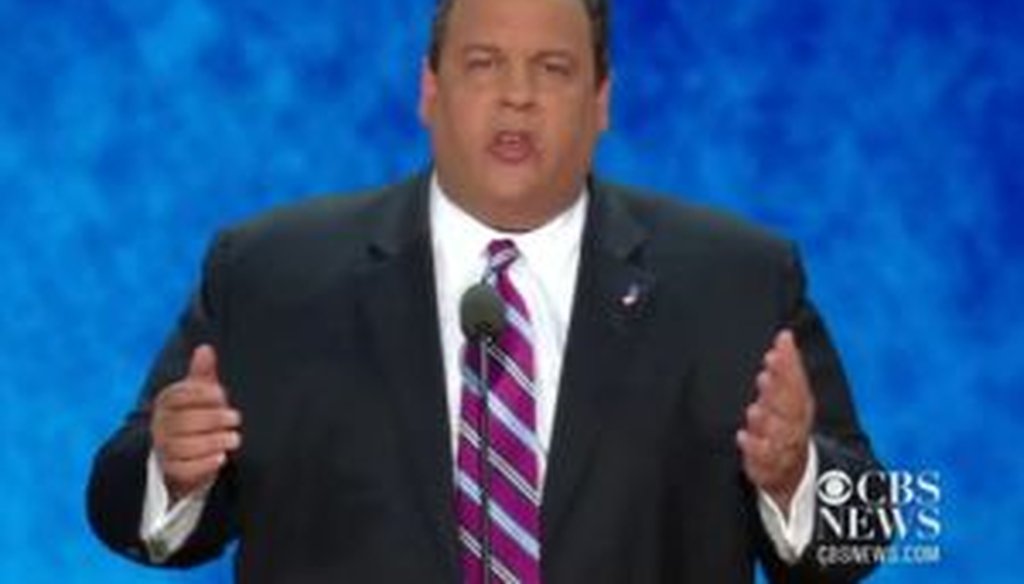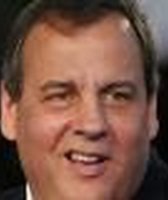Stand up for the facts!
Our only agenda is to publish the truth so you can be an informed participant in democracy.
We need your help.
I would like to contribute

New Jersey Gov. Chris Christie addresses the Republican National Convention in Tampa.
Chris Christie says there has been “$5 trillion in debt added over the last four years”
During his keynote speech at the Republican National Convention in Tampa, New Jersey Gov. Chris Christie picked up on one of the convention’s biggest themes -- that the United States is on a fiscally unstable path, with the accumulation of too much debt.
"With $5 trillion in debt added over the last four years, we have no other option but to make the hard choices, cut federal spending and fundamentally reduce the size of this government," Christie said.
We thought we’d check to see whether Christie’s math is correct.
We will start by noting that there are two main types of federal debt, and Christie didn’t specify which one he was referencing.
One, known as gross federal debt, includes all debt obligations of the federal government. The other -- public debt -- is a subset of gross federal debt that excludes debt owed by one part of the government to another part of the government, such as money lent by the Social Security trust fund for use elsewhere.
In the past, experts have told us that both measures have legitimate purposes, so we will look at both of these numbers without favoring one over the other.
We used a Treasury Department online calculator that tracks both measures of debt on a daily basis. Even though Christie said "four years," we assumed that -- as a good Republican -- he meant to start the clock on the day Barack Obama was inaugurated, and that he did not intend to count the final four and a half months of George W. Bush’s administration.
Given this framework, how do the numbers stack up?
On Jan. 20, 2009, when Obama took office, the public debt stood at $6.3 trillion. By Aug. 27, 2012, the public debt had risen to $11.2 trillion. The increase: $4.9 trillion. That’s close enough for us to $5 trillion.
As for gross federal debt, it rose between those two dates from $10.6 trillion to $16 trillion, an increase of $5.4 trillion. By this measure, Christie’s lowballing it.
We should note that in its ratings, PolitiFact considers not just the factual accuracy of a statement, but also whether credit and blame is fairly assigned.
In this case, Christie has a point that the Democrats bear some responsibility for this debt increase, since Obama was president for the entire period and the Democrats had majorities in both chambers of Congress for two years. But the Republicans have controlled the House since January 2011, and much of the debt stems from entitlement spending policies that were set under various past presidents and Congresses of both parties. So the overall blame is fairly bipartisan.
Our ruling
Christie’s claim -- that there has been "$5 trillion in debt added over the last four years" -- is just about on target. His number is either slightly high or a little low, depending on the type of measurement used, and that’s actually for a period short of a full four years. His implication that Obama and the Democrats are to blame has some merit, but it ignores the role Republicans have had. On balance, we rate the claim Mostly True.
Featured Fact-check
https://www.sharethefacts.co/share/1946db8e-eefc-46db-95e4-0c5031d907e1
Our Sources
Chris Christie, keynote address to the Republican National Convention in Tampa, Aug. 28, 2012
U.S. Treasury Department, "The Debt to the Penny and Who Holds It," accessed Aug. 28, 2012
Browse the Truth-O-Meter
More by Louis Jacobson
Chris Christie says there has been “$5 trillion in debt added over the last four years”
Support independent fact-checking.
Become a member!
In a world of wild talk and fake news, help us stand up for the facts.


















































